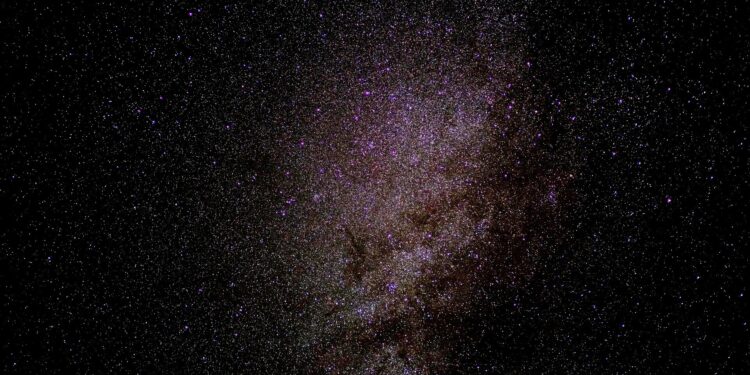Credit: CC0 Public domain
How heavy can an item be? An international team of researchers has discovered that ancient stars were capable of producing elements with an atomic mass greater than 260, heavier than any element in the periodic table found naturally on Earth. This discovery deepens our understanding of how elements form in stars.
We are literally made of stars. Stars are element factories, where elements are constantly merging or breaking apart to create other lighter or heavier elements. When we talk about light or heavy elements, we talk about their atomic mass. Generally speaking, atomic mass is based on the number of protons and neutrons in the nucleus of an atom of that element.
The heaviest elements are known to be created only in neutron stars via the rapid neutron capture process, or r-process. Imagine a single atomic nucleus floating in a soup of neutrons. Suddenly, a group of these neutrons gets stuck to the nucleus in a very short time – usually less than a second – then undergoes internal neutron-proton changes, and voilà! A heavy element, such as gold, platinum or uranium, is formed.
The heaviest elements are unstable or radioactive, meaning they decay over time. One way they do this is by division, a process called fission.
“The R process is necessary if you want to make elements heavier than, say, lead and bismuth,” says Ian Roederer, associate professor of physics at North Carolina State University and lead author of the research. Roederer was previously at the University of Michigan.
“You have to add a lot of neutrons very quickly, but the problem is that it requires a lot of energy and a lot of neutrons,” Roederer explains. “And the best place to find both is at the birth or death of a neutron star, or when neutron stars collide and produce the raw materials needed for the process.
“We have a general idea of how the R process works, but the process conditions are quite extreme,” says Roederer. “We don’t have a good idea of how many different types of sites in the universe can generate the R process, we don’t know how the R process ends, and we can’t answer questions like how many neutrons” Can you add? Or, how heavy can an item be? So we decided to look at what elements might be produced by fission in some old, well-studied stars to see if we could begin to answer some of these questions. “
The team took a new look at the amounts of heavy elements in 42 well-studied stars in the Milky Way. Stars were known to contain heavy elements formed by the r-process in previous generations of stars. By taking a broader view of the amounts of each heavy element found in these stars collectively, rather than individually as is more common, they identified previously unrecognized patterns. The work appears in the magazine Science.
These models indicated that some elements listed near the middle of the periodic table, such as silver and rhodium, were likely leftover from the fission of heavy elements. The team was able to determine that the R process can produce atoms with an atomic mass of at least 260 before they fission.
“This 260 is interesting because we have never detected anything this heavy in space or naturally on Earth, even in nuclear weapons tests,” says Roederer. “But seeing them in space gives us clues about how to think about patterns and fission and could give us insight into how the rich diversity of elements came to be.”
More information:
Ian U. Roederer et al, Element abundance patterns in stars indicate fission of nuclei heavier than uranium, Science (2023). DOI: 10.1126/science.adf1341. www.science.org/doi/10.1126/science.adf1341
Provided by North Carolina State University
Quote: Ancient stars formed extraordinarily heavy elements, researchers say (December 7, 2023) retrieved December 7, 2023 from
This document is subject to copyright. Apart from fair use for private study or research purposes, no part may be reproduced without written permission. The content is provided for information only.



